Home>Interior Design>Exclusive: HGTV’s Hilary Farr On Combining Paint And Fabrics
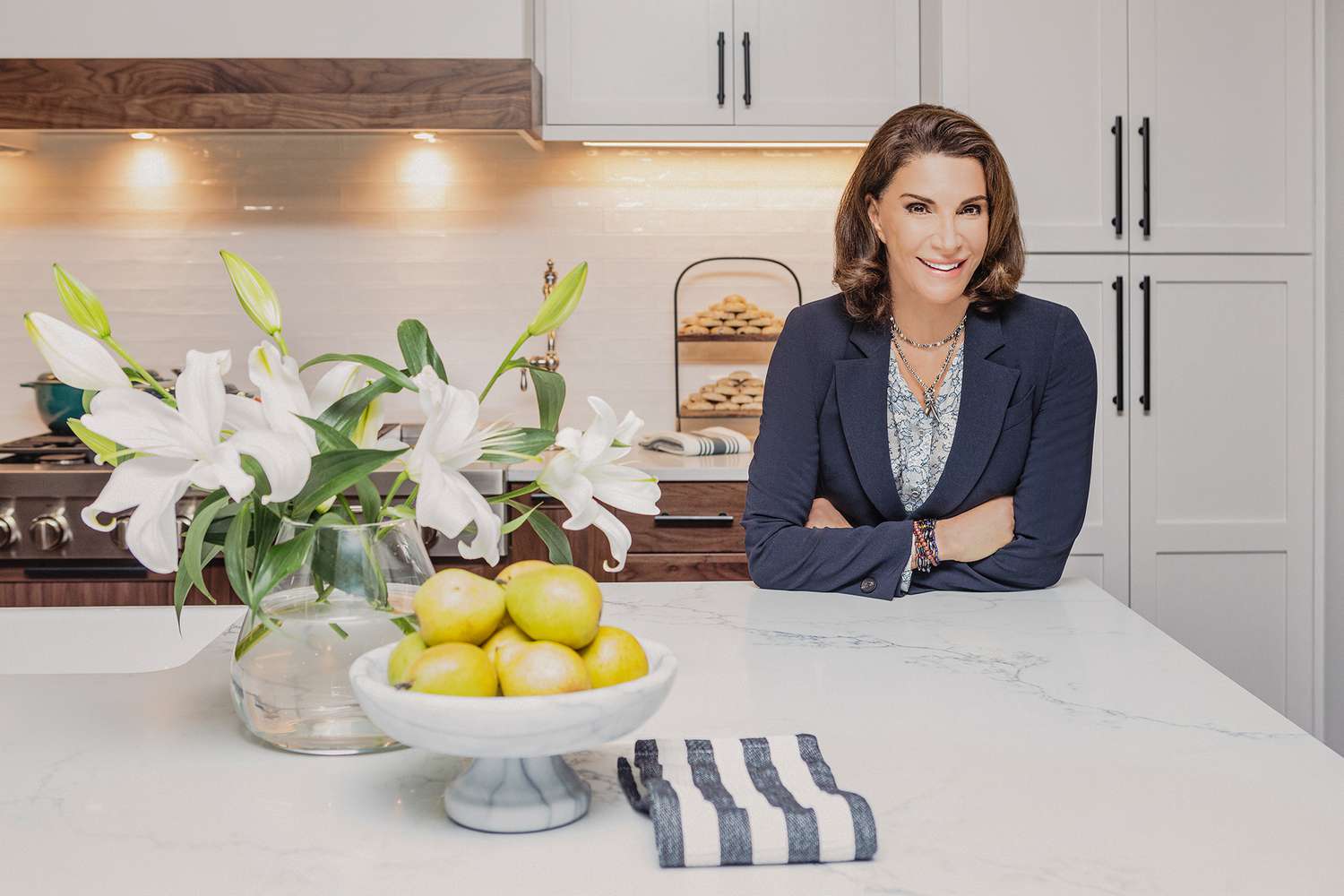

Interior Design
Exclusive: HGTV’s Hilary Farr On Combining Paint And Fabrics
Modified: October 20, 2024
Get expert advice from HGTV's Hilary Farr on how to combine paint and fabrics for stunning interior design. Discover the secrets to creating a beautiful and cohesive space.
(Many of the links in this article redirect to a specific reviewed product. Your purchase of these products through affiliate links helps to generate commission for Storables.com, at no extra cost. Learn more)
Introduction
When it comes to interior design, there are two key components that can make or break the overall look and feel of a space: paint and fabrics. The combination of these elements has the power to transform a room, creating a cohesive and visually appealing environment. Whether you’re decorating your own home or working with clients as an interior designer, understanding how to effectively combine paint and fabrics is crucial to achieving the desired aesthetic.
Paint serves as the foundation of any design project. It sets the tone, establishes the mood, and acts as a backdrop for the rest of the elements in the room. On the other hand, fabrics bring texture, pattern, and color to the space, adding depth and visual interest. The successful integration of these two components can create a harmonious and inviting environment that reflects the individual’s personal style and enhances the functionality of the room.
To begin understanding how to combine paint and fabrics effectively, it’s important to grasp the basics of color theory. Color theory explores the relationship between different colors and how they interact with one another. By understanding the principles of color theory, you can confidently choose paint colors and fabrics that complement and enhance each other.
When selecting paint colors for different spaces, consider the purpose and function of the room. For example, cool and calming colors like blues and greens are ideal for bedrooms and bathrooms, while warm and vibrant colors like oranges and reds can create a lively atmosphere in living rooms and dining areas. It’s also essential to take into account the amount of natural light the room receives, as this can significantly impact how the paint color appears.
Once you have chosen the appropriate paint colors, it’s time to select fabrics that will coordinate seamlessly with the wall colors. Look for fabrics that incorporate shades from your chosen color palette or opt for complementary colors to create a visually pleasing contrast. Consider the texture, pattern, and the scale of the fabric to ensure it complements the overall style of the room.
Achieving a harmonious color and fabric scheme requires careful consideration and balance. The paint color can influence the fabric choices and vice versa, creating a cohesive and visually pleasing design. It’s important to create a sense of unity by repeating certain colors or patterns throughout the space. This can be achieved through decorative pillows, curtains, area rugs, upholstery, and even artwork.
To successfully combine paint and fabrics, keep these tips in mind:
- Start with a neutral base for the walls and introduce color through fabrics.
- Consider the mood and atmosphere you want to create in a room.
- Experiment with different textures and patterns to add depth and interest.
- Don’t be afraid to mix different fabrics and patterns, as long as they complement each other.
- Use color accents strategically to draw attention to specific areas or features in the room.
By following these guidelines, you can create a cohesive and visually stunning interior design that seamlessly blends paint and fabrics. The right combination of colors and textures has the power to transform a space, adding personality and style. Let’s explore some case studies that exemplify successful integration of paint and fabrics in home design.
Key Takeaways:
- Harmonious color and fabric schemes are essential for creating visually stunning interiors. Understanding color theory, balancing neutrals with pops of color, and experimenting with textures and patterns are key to successful integration.
- The combination of paint and fabrics can significantly impact the mood of a room. From creating a calm and tranquil retreat to infusing energy and vibrancy, thoughtful paint and fabric choices play a vital role in setting the desired atmosphere.
Read more: How To Paint Fabric Blinds
The Importance of Paint and Fabrics in Interior Design
Paint and fabrics play a vital role in interior design, as they have the ability to completely transform a space and create a cohesive and visually pleasing environment. These two elements work hand in hand to set the tone, establish the mood, and add character to any room. Understanding the importance of paint and fabrics in interior design is essential for creating a harmonious and inviting space.
The choice of paint color is often the first step in the design process. Paint acts as the backdrop for the entire room and sets the stage for the rest of the decor. It has the power to make a room feel larger, brighter, or cozier, depending on the chosen colors. Different colors evoke different emotions, and understanding the psychology of color is crucial for achieving the desired atmosphere in a space.
For example, cool colors like blues and greens are known to create a calming and serene vibe, making them ideal for bedrooms and relaxation areas. On the other hand, warm colors like reds and oranges can add energy and excitement to living rooms and dining areas. Neutral colors, such as whites, grays, and beiges, are versatile and can work with any style or theme, providing a timeless and elegant look.
Once the paint color is selected, fabrics come into play to enhance and complement the overall design. Fabrics add texture, pattern, and color to a room, bringing it to life. From curtains and upholstery to pillows and rugs, fabrics create visual interest and can be used to establish a cohesive color palette throughout the space.
The choice of fabrics is influenced by the paint color, as they should harmonize and blend seamlessly. Fabrics can help to reinforce the mood and style of the room, whether it’s a luxurious velvet fabric for a formal living room or a casual linen fabric for a beach-inspired bedroom. The texture of fabrics also adds depth and dimension to the design, creating visual contrast and tactile appeal.
Another significant aspect of integrating paint and fabrics in interior design is to consider the functionality and practicality of the space. Certain fabrics are more suitable for high-traffic areas or homes with children and pets, while others are better suited for formal or decorative purposes. It’s essential to choose fabrics that not only look great but also meet the needs of the occupants.
Ultimately, the importance of paint and fabrics in interior design lies in their ability to transform a room into a personalized and stylish space. These elements allow individuals to express their personality, create a specific mood, and bring their vision to life. By carefully selecting paint colors and fabrics that harmonize and complement each other, a cohesive and visually appealing design can be achieved, enhancing the overall aesthetics and functionality of the space.
Understanding Color Theory
Color theory is a fundamental concept in design that explores the relationship between colors and their impact on human perception and emotions. It provides a framework for understanding how different colors interact with each other and how they can be effectively used in interior design to create a desired atmosphere.
One of the key components of color theory is the color wheel. The color wheel is a visual representation of the primary, secondary, and tertiary colors. The primary colors are red, blue, and yellow, which cannot be created by mixing other colors. Secondary colors are created by mixing two primary colors (e.g., purple, green, and orange), while tertiary colors are achieved by mixing a primary color with a neighboring secondary color on the color wheel.
Understanding the different color schemes is essential for creating a visually appealing and harmonious design. Here are some of the most common color schemes:
- Monochromatic: This color scheme involves using different shades and tints of a single color. It creates a cohesive and simple design with varying levels of lightness and darkness.
- Analogous: Analogous color schemes involve using colors that are adjacent to each other on the color wheel. This creates a harmonious and unified look while offering subtle variations in hue.
- Complementary: Complementary colors are opposite each other on the color wheel, such as blue and orange or red and green. This color scheme creates a vibrant and eye-catching contrast, making each color pop.
- Triadic: A triadic color scheme uses three colors that are evenly spaced on the color wheel, creating a balanced and dynamic look. It offers a high level of contrast and can be used to create a bold and energetic design.
When applying color theory to interior design, it’s important to consider how different colors evoke specific emotions and moods. Warm colors like reds, oranges, and yellows are energizing and stimulating, and they can create a cozy and inviting atmosphere. Meanwhile, cool colors like blues, greens, and purples are calming and soothing, making them ideal for relaxation spaces.
Using color theory, interior designers can effectively create balance, contrast, and harmony within a space. They can strategically use color schemes to highlight focal points, create visual interest, and evoke specific emotions. Understanding color theory empowers designers to make informed decisions when selecting paint colors and fabrics, resulting in a visually pleasing and cohesive design.
By utilizing the principles of color theory, interior designers and homeowners alike can transform their spaces into vibrant and harmonious environments that reflect their personal style and create a positive impact on the occupants.
Choosing the Right Paint Colors for Different Spaces
The choice of paint colors can significantly impact the overall look and feel of a space, so it’s important to carefully consider the appropriate colors for each room. Different spaces have different purposes, and the paint colors should align with the desired atmosphere and functionality of the space.
Bedrooms are typically spaces of relaxation and rest, so it’s best to select calm and soothing colors. Soft blues, serene greens, and gentle neutrals like shades of gray or warm beiges can create a serene and tranquil ambiance. These colors promote a sense of peace and tranquility, helping to create a restful environment conducive to sleep and relaxation.
In contrast, living rooms and entertaining areas are often spaces where energy and socialization take place. Warm and inviting colors like warm beiges, earthy tones, or rich jewel tones can create a cozy and welcoming atmosphere. These colors can evoke feelings of comfort and intimacy, making guests feel right at home. Consider using accent walls or pops of bold colors to add visual interest and create focal points.
For kitchens and dining areas, lighter and brighter colors are often preferred. White, off-white, or shades of light gray can create a fresh and clean look, making the space feel open and airy. These colors also provide a neutral backdrop that allows other design elements, such as cabinetry, countertops, and appliances, to take center stage. If you want to add some personality and drama, consider using vibrant and energizing colors like red or yellow as accent colors through accessories or backsplashes.
When it comes to bathrooms, a balance between freshness and tranquility is usually desired. Light, cool colors like pale blues, soft greens, and clean whites can create a spa-like atmosphere. These colors promote a sense of cleanliness and serenity while maintaining a visually pleasing and calming environment. Adding texture through materials like tiles can enhance the visual appeal and add depth to the space.
Home offices and study spaces benefit from colors that enhance concentration and focus. Neutral colors like grays, beiges, or muted greens can create a calm and balanced environment, reducing distractions and promoting productivity. However, if creativity is needed in the space, adding pops of energizing colors like yellow or orange can stimulate the mind and spark inspiration.
In general, it’s essential to consider the amount of natural light a room receives before finalizing paint colors. Rooms with abundant natural light can handle darker or richer colors without feeling cramped or overwhelming. In contrast, rooms with limited natural light may benefit from lighter, more reflective colors to brighten up the space.
Ultimately, choosing the right paint colors for different spaces involves understanding the purpose of the room, considering the desired atmosphere, and assessing the lighting conditions. By taking these factors into account, you can create a cohesive and visually appealing interior design that aligns with the functionality and aesthetics of each space in your home.
Selecting Fabrics that Complement your Paint Choices
Once you have chosen the perfect paint colors for your space, it’s time to select fabrics that will harmonize and complement your paint choices. Fabrics play a crucial role in interior design, as they add texture, pattern, and color to a room. By carefully selecting fabrics, you can enhance the overall aesthetics and create a cohesive and visually appealing design.
When choosing fabrics, consider the color palette established by your paint choices. Look for fabrics that incorporate shades from your chosen color scheme, whether it’s through complementary tones or different shades of the same hue. This will create a harmonious and unified look throughout the room.
For example, if you have selected a cool-toned blue paint color for your walls, consider fabrics that incorporate shades of blue, such as soft blue curtains or a patterned throw pillow with hints of blue. This will help tie the room together and create a cohesive and balanced design.
Another approach is to use fabrics that offer a contrast to your paint choices, creating visual interest and depth in the space. If you have opted for a neutral paint color like beige or gray, you can introduce fabrics with bold patterns, vibrant colors, or rich textures to add a pop of impact.
Consider the texture of fabrics as well. Texture adds dimension and visual interest to a space, creating a tactile experience. Pair smooth and sleek fabrics like silk or satin with a glossy or matte paint finish for a sophisticated and elegant look. On the other hand, pairing textured fabrics like chunky knits or rough linens with a more textured or matte paint finish can create a cozy and inviting atmosphere.
The scale of the fabric pattern is another important consideration. If you have chosen a paint color with a bold or large-scale pattern, it’s best to select fabrics with smaller-scale patterns or solid colors to prevent overwhelming the room. Conversely, if your paint color has a subtle or small-scale pattern, you can incorporate fabrics with larger or bolder patterns to create visual interest and add drama.
Don’t be afraid to mix and match different fabrics in a space. This can add layers and depth to the design. Try combining different textures, patterns, and colors to create a visually engaging and dynamic look. Just ensure that the fabrics you choose complement each other and work harmoniously in the overall design scheme.
Lastly, consider the practicality and durability of the fabrics, especially in high-traffic areas or if you have children or pets. Look for fabrics that are easy to clean and maintain, such as stain-resistant materials or those with removable and washable covers.
By selecting fabrics that complement your paint choices, you can create a cohesive and visually stunning interior design. Fabrics bring life, personality, and texture to a room, elevating its overall aesthetics. Whether it’s through color coordination, texture pairing, or pattern mixing, the right fabrics can enhance your paint choices and create a truly customized and visually appealing space.
When combining paint and fabrics, consider the color wheel to create a cohesive color scheme. Use complementary or analogous colors for a harmonious look.
Read more: How To Paint Fabric Furniture
Creating Harmonious Color and Fabric Schemes
Creating a harmonious and visually appealing interior design involves carefully combining colors and fabrics in a way that complements and enhances each other. A well-executed color and fabric scheme can elevate the overall aesthetics of a space, creating a cohesive and visually captivating design.
One approach to achieving a harmonious color and fabric scheme is to start with a neutral base. Use neutral paint colors on the walls, such as whites, beiges, or grays. Neutrals provide a versatile backdrop that allows the fabrics and accent colors to take center stage. They also create a sense of balance and harmony, making it easier to introduce different fabrics without overwhelming the space.
Once you have established a neutral base, it’s time to introduce color through your fabric choices. Consider the color palette you have established with your paint choices and select fabrics that incorporate those colors. Look for fabrics that offer different shades and tones of the colors you have chosen. This creates a cohesive and unified look, tying the room together with a common thread of colors.
For example, if you have chosen a warm, earthy paint color palette, consider fabrics that feature similar warm tones, such as shades of browns, oranges, and yellows. This consistent color scheme creates a sense of harmony throughout the space and enhances the overall aesthetics.
When combining colors, consider using a mix of solid-color fabrics and patterned fabrics. This adds visual interest and depth to the design. Pairing solid-colored fabrics with patterned fabrics can create a focal point or draw attention to certain areas of the room.
When using patterns, be mindful of the scale and intensity of the patterns. Mixing different patterns can be visually appealing, but it’s important to ensure they work together harmoniously. Select patterns that complement each other in terms of scale, intensity, and style. For example, a large-scale floral pattern may work well with a small-scale geometric pattern, while a bold striped fabric may complement a subtle polka dot fabric.
While it’s important to have a consistent color and fabric scheme throughout a space, don’t be afraid to introduce accents or pops of contrasting colors. This can create visual interest and add a touch of personality to the design. Select accent fabrics or accessories that offer a vibrant burst of color that complements the overall scheme, but be mindful not to overdo it, as too many contrasting colors can disrupt the harmony of the design.
Remember, achieving a harmonious color and fabric scheme is about finding the right balance and creating a cohesive visual story. Take into consideration the colors, patterns, textures, and scale of your fabrics to ensure they work together harmoniously. Pay attention to the overall mood and atmosphere you want to create in the space and let that guide your color and fabric choices.
By carefully combining colors and fabrics, you can create a harmonious and visually captivating interior design. A well-executed color and fabric scheme not only enhances the aesthetics but also creates a sense of balance and unity, resulting in a space that is both visually stunning and inviting.
Tips for Combining Paint and Fabrics Successfully
Combining paint and fabrics effectively is the key to achieving a cohesive and visually stunning interior design. Whether you’re decorating your own home or working with clients as an interior designer, here are some valuable tips to help you successfully combine paint and fabrics:
1. Set a color palette: Start by establishing a color palette for the room. Choose paint colors that align with the desired atmosphere and function of the space. Then, select fabrics that incorporate shades from your chosen color palette. This creates a cohesive and unified look throughout the room.
2. Consider the size of the space: Take the size of the room into account when selecting paint colors and fabrics. Lighter colors can make a small room appear larger and more spacious, while darker colors can add depth and coziness to a larger room. Similarly, use fabrics that are proportionate to the size of the space. Avoid overwhelming a small room with large-scale patterns or using tiny prints in a large area.
3. Balance neutrals with pops of color: Neutrals make a great base for a room, but they need to be balanced with pops of color to add interest and personality. Use fabrics with vibrant hues or bold patterns as accent pieces, such as throw pillows, curtains, or rugs. This adds visual excitement and prevents a space from feeling too monotonous.
4. Consider fabric durability: Take into account the durability and practicality of the fabrics you choose, especially in high-traffic areas or homes with children or pets. Opt for fabrics that are stain-resistant, easy to clean, and durable enough to withstand everyday use. Balance aesthetics with functionality to ensure longevity and enjoyment of your design.
5. Exploit texture: Incorporating different textures in your fabrics can add depth and visual interest to a space. Use textured fabrics, such as velvet, linen, or jacquard, to create a tactile experience and create dimension within the room. Mixing textures can also bring added warmth and richness to the design.
6. Play with pattern scale: Mixing patterns can add personality and visual appeal to a room, but be mindful of pattern scale. Pair large-scale patterns with small-scale ones to create balance and prevent overwhelming the space. If you use a bold and busy pattern, balance it out with solid-colored fabrics. This helps to create a cohesive and pleasing visual harmony.
7. Experiment with layering: Layering fabrics is a great way to add depth and create a cozy atmosphere. Combine different materials, such as cotton, wool, or silk, to create texture and interest. Use throw blankets, accent pillows, and window treatments to layer fabrics and create a luxurious and inviting vibe.
8. Test samples together: Before making any final decisions, it’s essential to test paint and fabric samples together in the space. Observe how the colors and fabrics interact in different lighting conditions. Pay attention to how they complement or contrast each other. Take your time to ensure that the combination is visually appealing and achieves the desired effect.
9. Trust your instincts: While it’s important to consider design principles, ultimately, trust your instincts and personal style. Select paint colors and fabrics that resonate with you and create a space that feels like a true reflection of your personality. Interior design is about creating a space that brings joy and comfort, so don’t be afraid to express yourself.
By following these tips and balancing aesthetics with functionality, you can successfully combine paint and fabrics, creating a cohesive and visually stunning interior design. Allow yourself to be creative, experiment, and trust your instincts to achieve a space that is both beautiful and functional.
Enhancing the Mood of a Room through Paint and Fabric Choices
The mood of a room is one of the essential aspects of interior design as it greatly influences our emotions and overall experience within a space. By carefully choosing paint colors and fabrics, you can effectively enhance the mood and create the desired atmosphere in a room. Here’s how:
1. Calm and Tranquil: For a serene and peaceful ambiance, opt for soft and cool colors like blues, greens, and pastels. These colors evoke a sense of calmness and relaxation, making them perfect for bedrooms, meditation spaces, or bathrooms. Complement these soothing hues with fabrics that have a natural and gentle texture, such as linen or cotton, to enhance the overall tranquility of the room.
2. Cozy and Warm: To create a cozy and inviting atmosphere, choose warm colors like earthy tones, rich browns, and warm neutrals. These colors evoke a sense of comfort and intimacy, ideal for living rooms or reading nooks. Pair these warm paint colors with fabrics that have a plush texture, such as velvet, and incorporate patterns that exude warmth, like plaid or herringbone, to enhance the cozy ambiance.
3. Energetic and Vibrant: If you want to infuse a space with energy and liveliness, opt for bold and vibrant paint colors like reds, oranges, or yellows. These warm colors can create a stimulating atmosphere, perfect for a creative studio, kitchen, or dining area. Pair these vibrant hues with fabrics that have pops of contrasting colors or dynamic patterns to further enhance the energetic vibe of the room.
4. Fresh and Invigorating: For a space that feels fresh and invigorating, consider using crisp, cool, and bright colors such as whites, light grays, or pastel tones. These colors bring a sense of airiness and clarity, making them suitable for bathrooms, sunrooms, or offices. Choose fabrics that have a light and breezy texture, like sheer curtains or linen upholstery, to maintain the fresh and invigorating vibe.
5. Sophisticated and Elegant: To create a sophisticated and elegant ambiance, opt for timeless and classic colors like deep blues, rich grays, or luxurious blacks. These colors exude sophistication and refinement and work well in formal dining rooms or home offices. Pair these elegant paint colors with fabrics that have a touch of glamour, such as silk or satin, and incorporate rich textures like velvet or brocade to elevate the overall elegance of the room.
Remember, the combination of paint colors and fabrics plays a significant role in setting the mood in a room. Explore different color palettes and experiment with fabric textures, patterns, and materials to achieve the desired atmosphere. Pay attention to how colors and fabrics interact with each other, as well as how they are affected by natural and artificial lighting in the space.
By carefully selecting paint colors and fabrics that align with the intended mood, you can transform a room into a space that evokes the desired emotions and enhances your overall experience within it.
Case Studies: Successful Integration of Paint and Fabrics in Home Design
Examining real-life examples can provide valuable insights into the successful integration of paint and fabrics in home design. Let’s explore a few case studies highlighting how paint and fabrics were thoughtfully combined to create stunning and cohesive interiors:
Case Study 1: Coastal Retreat
In a beachside cottage, the goal was to evoke a serene and breezy atmosphere inspired by the coast. Soft blues and sandy neutrals were selected as paint colors for the walls, creating a calming backdrop reminiscent of the ocean and sandy beaches. Fabrics, such as light and airy linens, were chosen to enhance the coastal aesthetic. Prints featuring seashells and beach motifs were incorporated into throw pillows and curtains to add playful accents. The successful integration of paint and fabrics in this case study created a harmonious coastal retreat that transports residents and guests to a relaxing seaside escape.
Case Study 2: Modern Elegance
In a contemporary penthouse, the design intention was to achieve a sleek and sophisticated ambiance. Palettes of rich grays and deep blues were used for the walls, creating a modern and luxurious backdrop. Fabrics in this case study comprised of high-quality materials like velvet, silk, and leather. These fabrics added texture and dimension to the space, while their dark tones harmonized with the paint choices. Metallic accents were sprinkled throughout with fabrics that incorporated silver and gold threads, reflecting light and adding a touch of opulence. The successful integration of paint and fabrics in this case study resulted in a visually striking interior that exuded modern elegance.
Case Study 3: Playful Eclectic
In a vibrant and eclectic living room, a bold and daring approach to combining paint colors and fabrics was taken. Various vibrant hues, such as oranges, pinks, and blues, were splashed across walls, creating a colorful and energetic atmosphere. Fabrics played an essential role in this case study, with patterns and textures abundantly used. Stripes, geometric prints, and floral motifs were integrated into upholstery, cushions, and curtains. These fabrics in different colors and textures added depth and visual interest, while also tying together the eclectic design. The successful integration of paint and fabrics in this case study resulted in a playful and inviting space that showcased the homeowner’s vibrant personality.
These case studies demonstrate the impact that paint and fabric choices can have on the overall aesthetics and ambiance of a space. By carefully selecting paint colors and fabrics that align with the desired style, mood, and functionality of the room, designers can create visually stunning interiors that reflect the personality and preferences of the homeowner.
Remember, each design project is unique, so it’s important to consider the specific context and vision for the space. By drawing inspiration from these case studies and using them as a foundation, designers and homeowners can successfully integrate paint and fabrics to create beautiful and cohesive interior designs.
Read more: How To Paint Outdoor Fabric
Conclusion
In conclusion, the successful integration of paint and fabrics is crucial in creating a cohesive and visually appealing interior design. By understanding color theory, choosing the right paint colors for different spaces, and selecting fabrics that complement the paint choices, a harmonious color and fabric scheme can be achieved. This not only enhances the overall aesthetics of a room but also sets the desired mood and atmosphere.
When combining paint and fabrics, it’s important to consider factors such as color psychology, the size of the space, and the desired functionalities of the room. By choosing paint colors that align with the purpose of the space and incorporating fabrics that enhance the overall design, a well-balanced and visually stunning interior can be created.
Texture, pattern, and scale are also key elements to consider when integrating paint and fabrics. The use of different textures can add depth and interest to a space, while patterns can create focal points and visual intrigue. The scale of patterns should be carefully balanced to maintain harmony and avoid overwhelming the room.
Throughout the design process, it’s essential to trust your instincts and infuse your personal style into the space. Whether you’re aiming for a calm and tranquil retreat, a vibrant and energetic atmosphere, or a sophisticated and elegant ambiance, your paint and fabric choices will play a vital role in achieving the desired result.
By following the tips provided, such as experimenting with different color schemes, layering fabrics, and testing samples together, you can create successful combinations of paint and fabrics. These combinations will not only enhance the overall aesthetics and functionality but also create a space that reflects your personality and brings joy and comfort to both residents and guests.
Lastly, examining case studies of successful integration of paint and fabrics can offer inspiration and insights into how these elements can work together harmoniously. The case studies demonstrate the impact of thoughtful paint and fabric choices in creating specific moods and styles, showcasing the endless possibilities for creating unique and captivating interior designs.
So, whether you’re undertaking a home renovation or working as an interior designer, remember the importance of paint and fabrics, and how their successful integration can transform a space into a personalized and visually stunning environment. With careful consideration, creativity, and attention to detail, you can achieve outstanding results that will leave a lasting impression on all who enter the room.
Frequently Asked Questions about Exclusive: HGTV's Hilary Farr On Combining Paint And Fabrics
Was this page helpful?
At Storables.com, we guarantee accurate and reliable information. Our content, validated by Expert Board Contributors, is crafted following stringent Editorial Policies. We're committed to providing you with well-researched, expert-backed insights for all your informational needs.
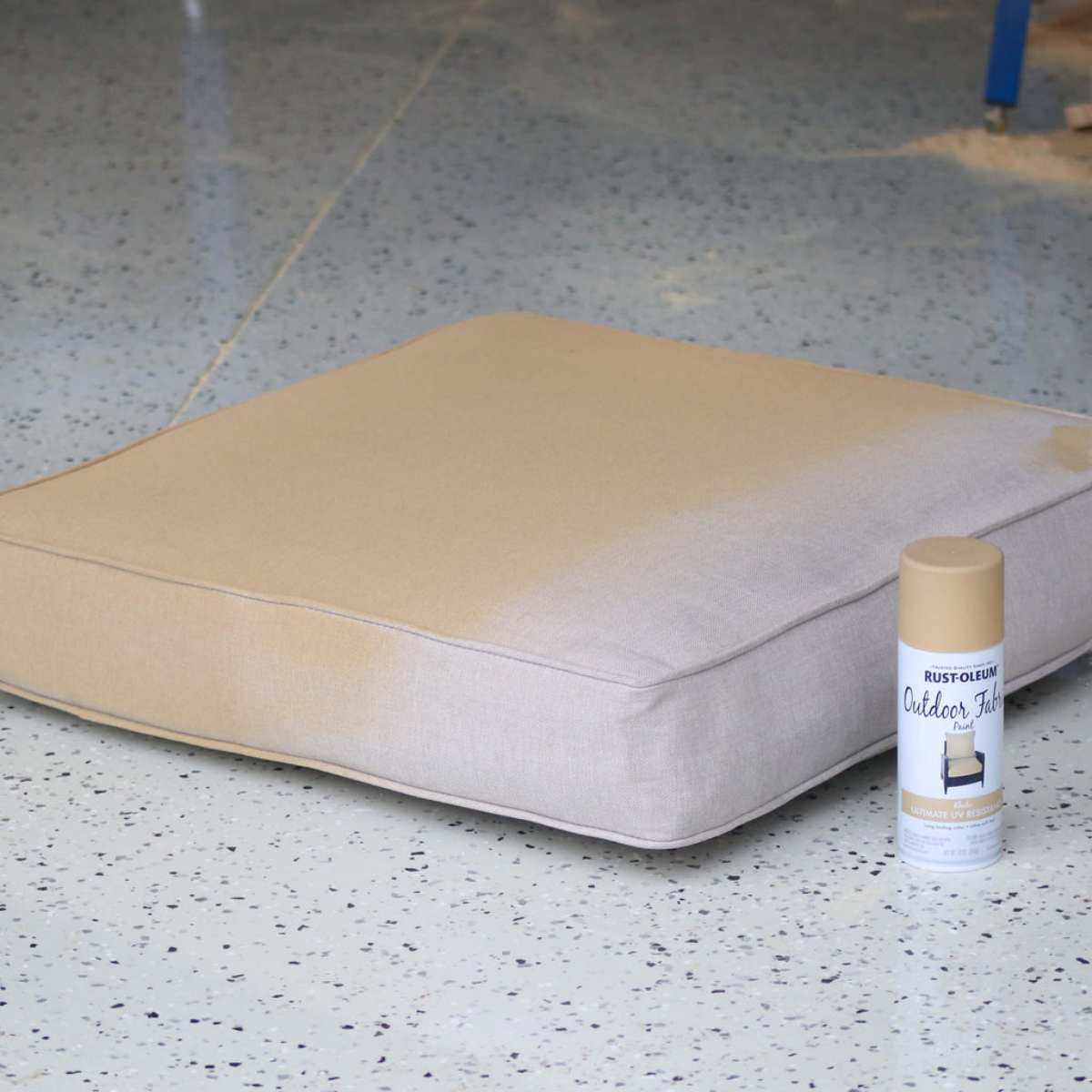
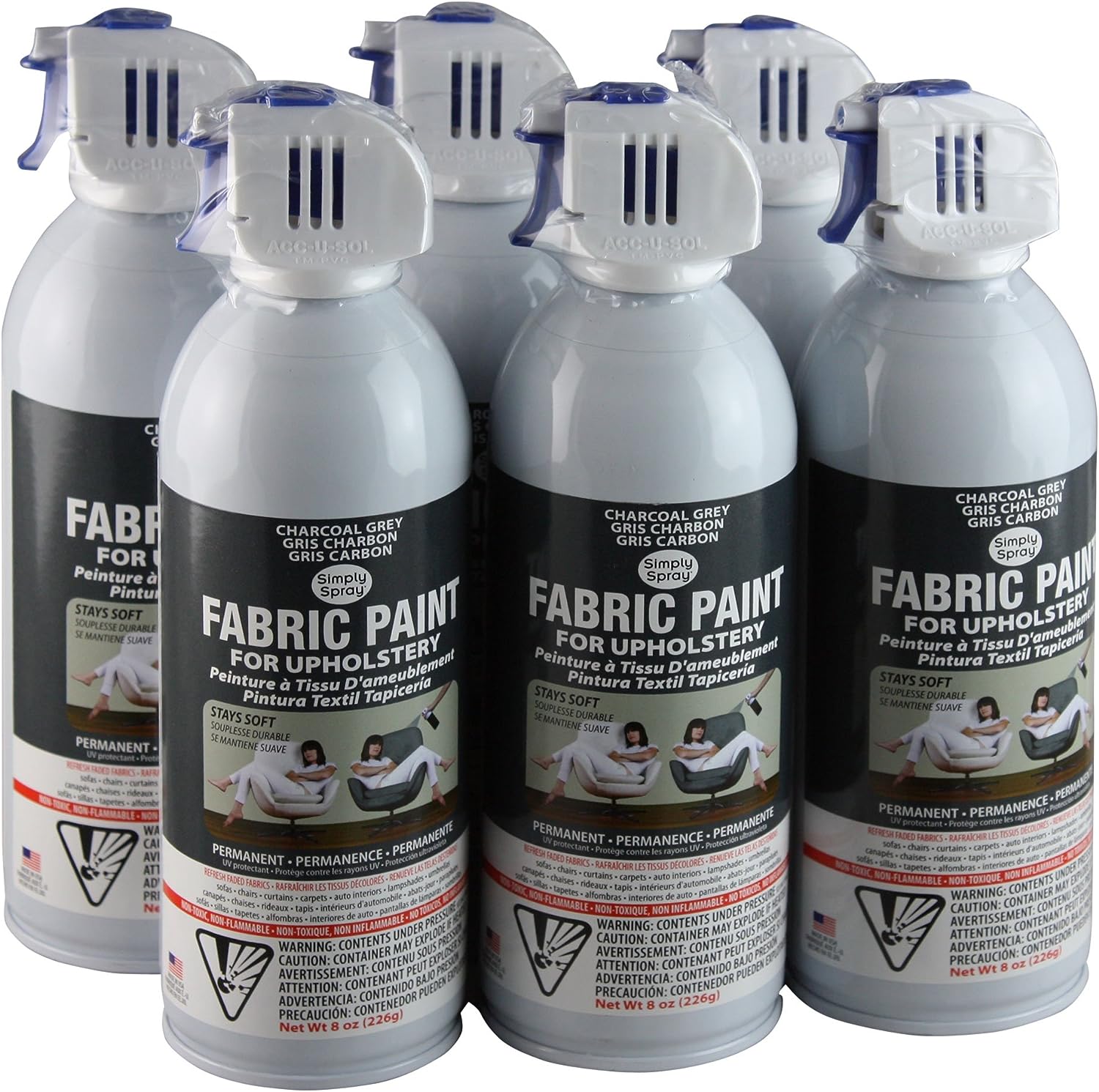
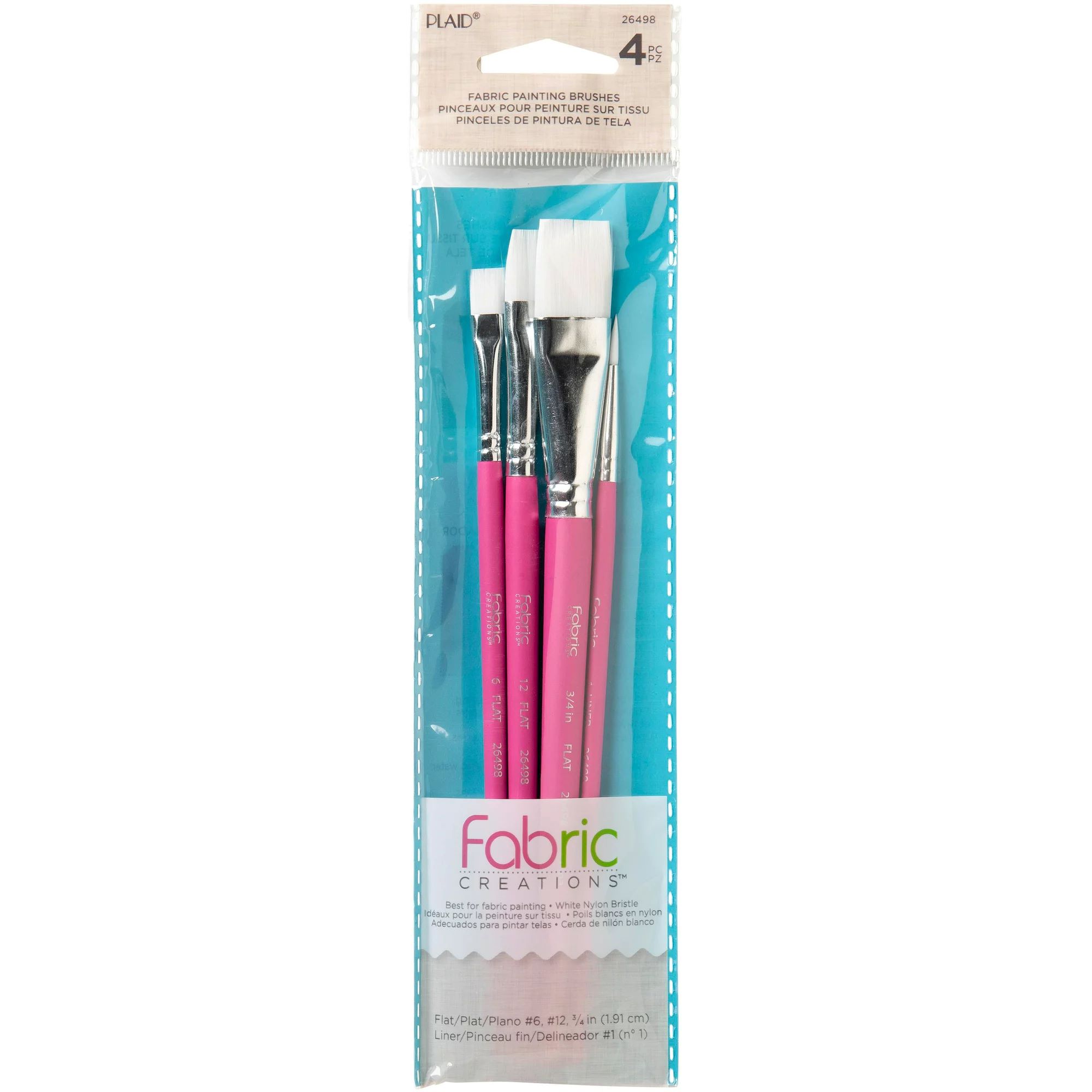


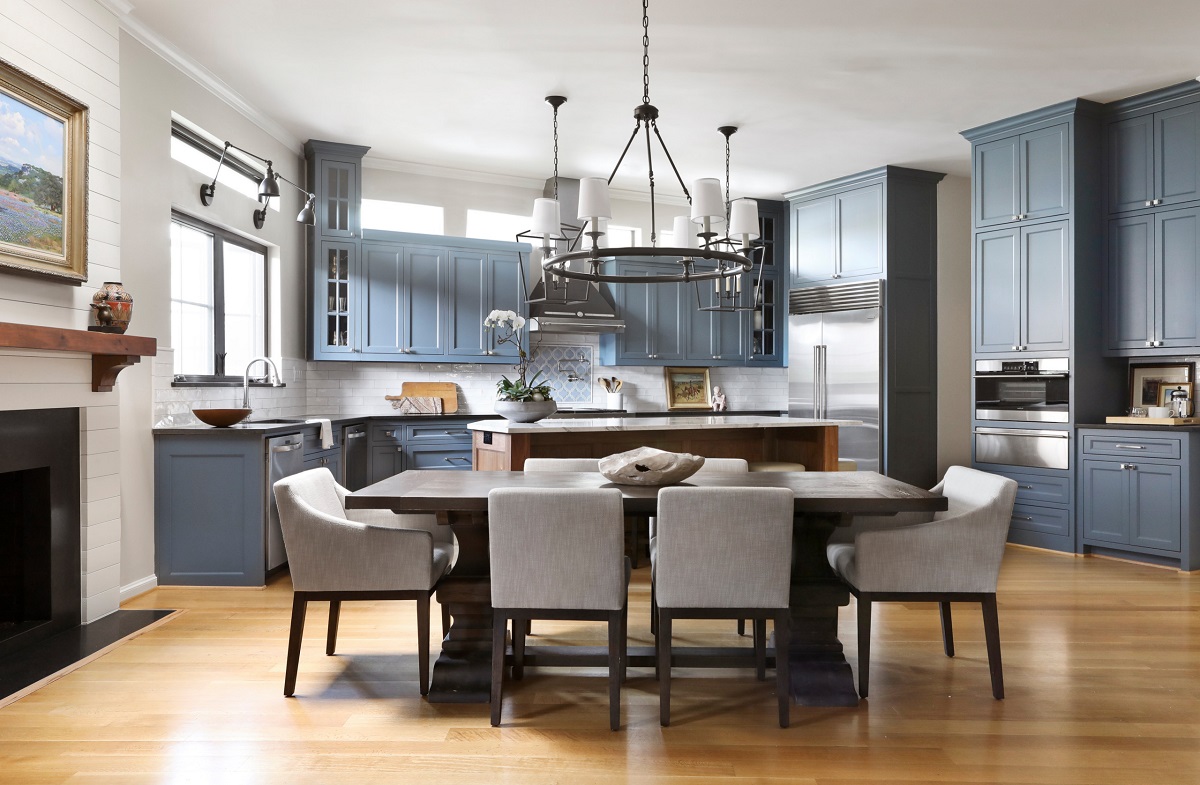



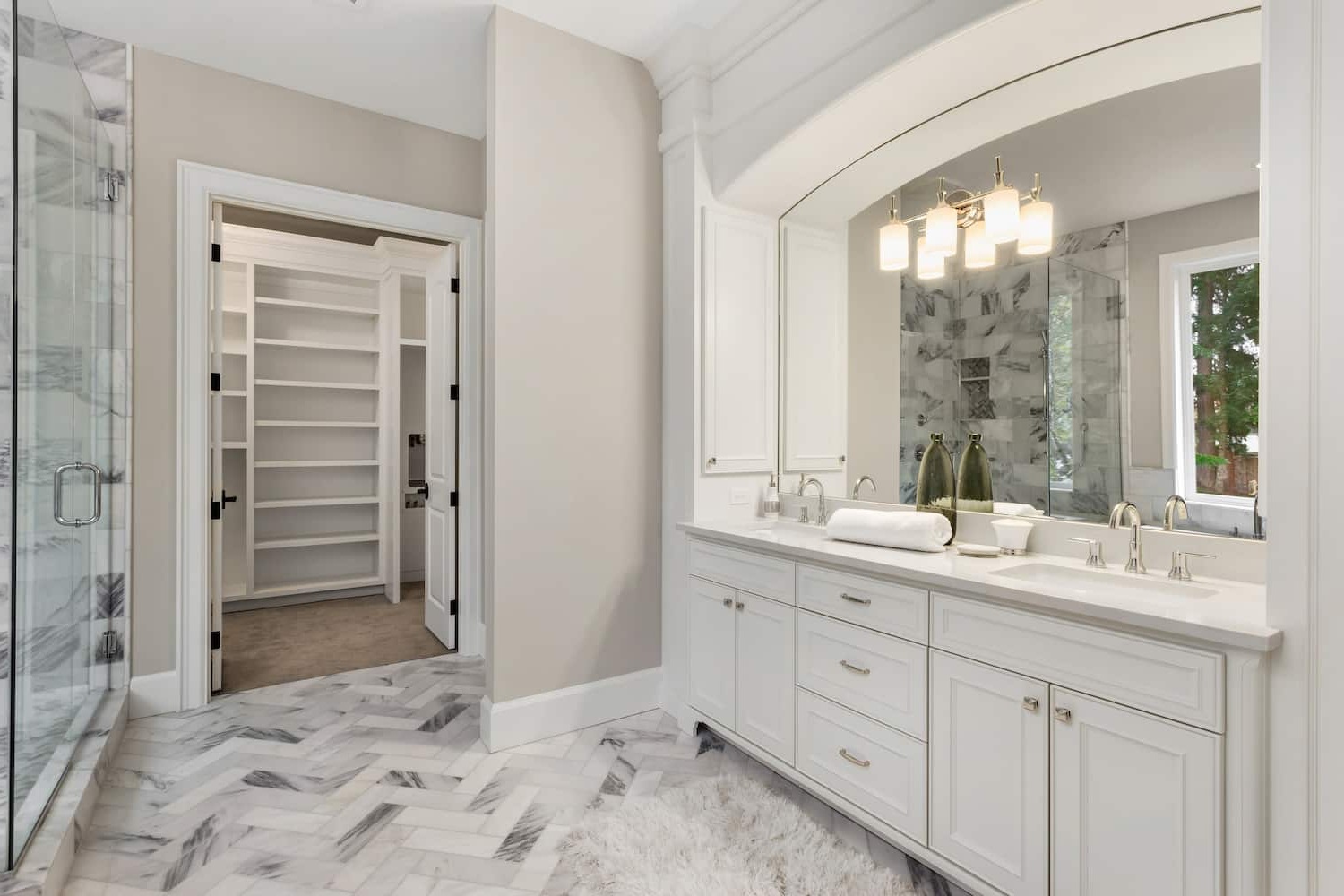

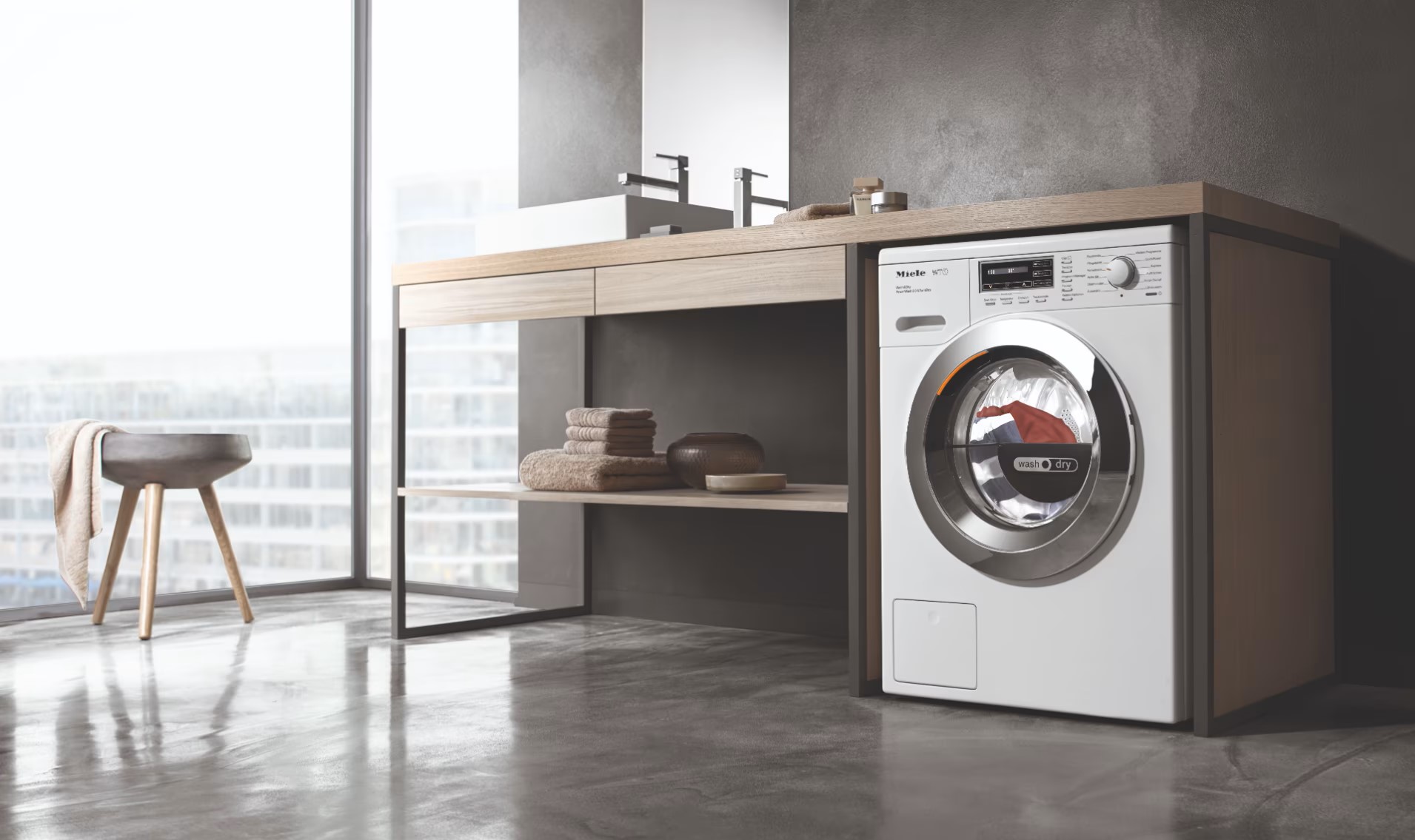


0 thoughts on “Exclusive: HGTV’s Hilary Farr On Combining Paint And Fabrics”